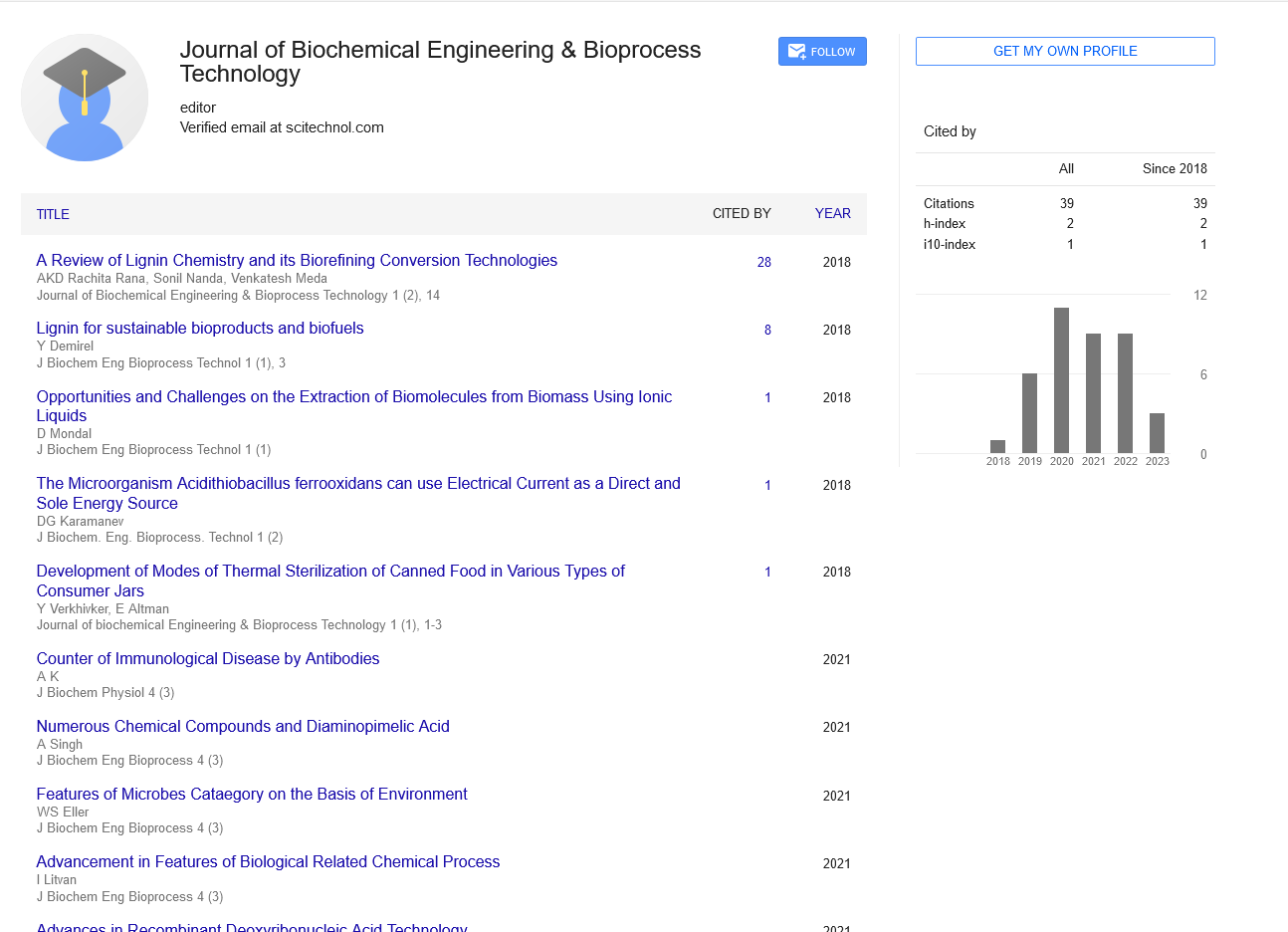Commentary, J Biochem Eng Bioprocess Vol: 6 Issue: 1
Stem Cell Bioprocessing for Tissue Engineering and Regenerative Medicine
Stephen Pautler*
1Department of Stem Cell and Regenerative biology, University of Saskatchewan, Canada
*Corresponding Author: Stephen Pautler
Department of Stem Cell and
Regenerative biology, University of Saskatchewan, Canada
E-mail: paulters@outlook.com
Received date: 22 February, 2023, Manuscript No. JBEBT-23-96112;
Editor assigned date: 27 February, 2023, Pre QC No. JBEBT-23-96112(PQ);
Reviewed date: 14 March, 2023, QC No. JBEBT-23-96112;
Revised date: 21 March, 2023, Manuscript No: JBEBT-23-96112(R);
Published date: 28 March, 2023, DOI: 10.35248/jbebt.1000055
Citation: Pautler S (2023) Stem Cell Bioprocessing for Tissue Engineering and Regenerative Medicineg. J Biochem Eng Bioprocess 6:1.
Description
Stem cell bioprocessing is a critical component in the development of tissue engineering and regenerative medicine. These fields are aimed at developing therapies that can replace or repair damaged tissues and organs in the body, which have the potential to revolutionize healthcare. This essay will discuss how stem cell bioprocessing can be used for tissue engineering and regenerative medicine, the challenges that need to be overcome in the field, and the potential for future applications. Tissue engineering is a field that involves the production of functional tissues through the use of cells, biomaterials, and bioprocessing techniques. Stem cells are often used in tissue engineering because of their ability to differentiate into various cell types, which makes them ideal for producing complex tissues. Stem cell bioprocessing is the process of expanding and differentiating stem cells in a controlled environment, which is necessary to produce the large quantities of cells required for tissue engineering.
There are several challenges associated with stem cell bioprocessing for tissue engineering. One of the main challenges is the development of bioprocesses that can produce large quantities of cells without sacrificing their quality or function. Another challenge is the development of biomaterials that can support stem cell growth and differentiation. Finally, the bioprocessing environment needs to be carefully controlled to ensure that the cells are not exposed to any harmful agents that could compromise their viability. Despite these challenges, stem cell bioprocessing has already shown promise in several areas of tissue engineering and regenerative medicine. For example, researchers have used stem cells to regenerate damaged heart tissue, create artificial skin, and develop cartilage replacements. In addition, stem cells have also been used to produce bioartificial organs, such as kidneys and livers, which could one day replace the need for organ donors.
The potential for stem cell bioprocessing in tissue engineering and regenerative medicine is enormous. As researchers continue to develop new bioprocessing techniques and biomaterials, it is likely that stem cells will become an increasingly important tool for producing complex tissues and organs. This could lead to a future where diseases such as diabetes and heart disease are treated with bioartificial organs, and where injuries such as spinal cord damage are repaired through tissue regeneration. However, there are still many challenges that need to be overcome before stem cell bioprocessing can be used on a wider scale. One of the main challenges is the need for more standardized bioprocessing techniques and protocols. This will require collaboration between researchers, regulators, and industry to develop standardized protocols that can be used across different laboratories and manufacturing facilities. In addition, there is a need for improved biomaterials that can support stem cell growth and differentiation, as well as better bioreactor systems that can produce the necessary microenvironments for stem cell growth. Another challenge is the regulatory landscape surrounding stem cell bioprocessing. In many countries, stem cell therapies are still heavily regulated and require extensive clinical trials before they can be used in patients. This can be a lengthy and expensive process that can slow down the development of new therapies. Therefore, there is a need for more streamlined regulatory processes that can support the development of new therapies while still ensuring patient safety.
In conclusion, stem cell bioprocessing is an essiential component in the development of tissue engineering and regenerative medicine. Despite the challenges associated with the field, stem cell bioprocessing has already shown promise in several areas of tissue engineering and regenerative medicine. As researchers continue to develop new bioprocessing techniques and biomaterials, it is likely that stem cells will become an increasingly important tool for producing complex tissues and organs. However, there are still many challenges that need to be overcome before stem cell bioprocessing can be used on a wider scale. Therefore, collaboration between researchers, regulators, and industry is essential to develop standardized protocols, improved biomaterials.
 Spanish
Spanish  Chinese
Chinese  Russian
Russian  German
German  French
French  Japanese
Japanese  Portuguese
Portuguese  Hindi
Hindi 